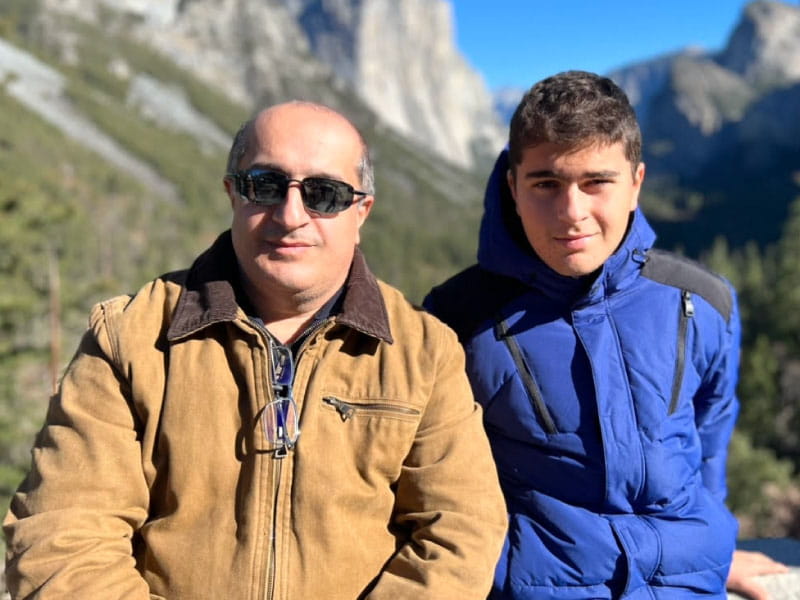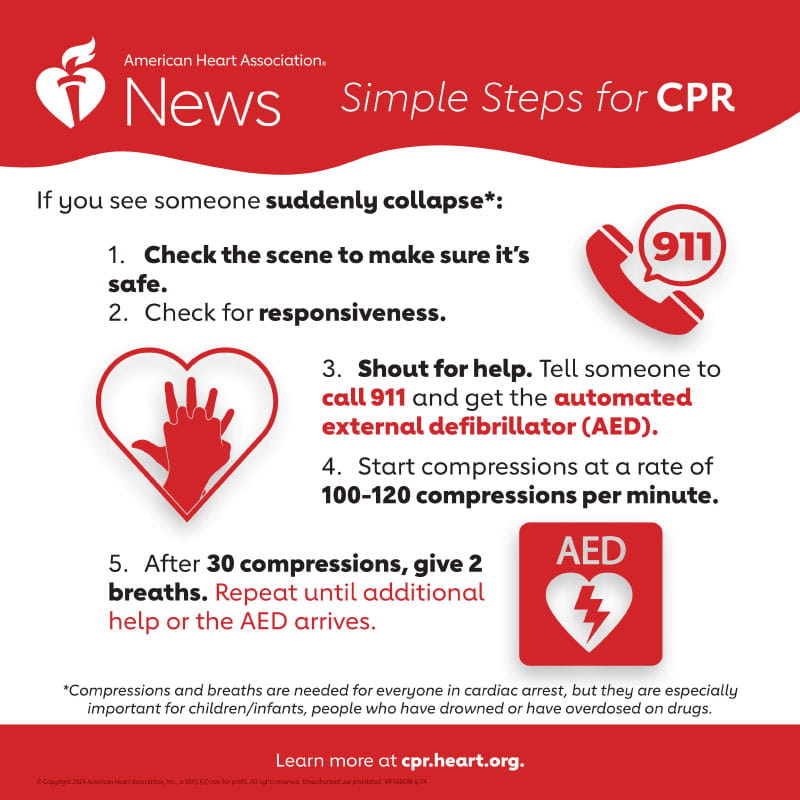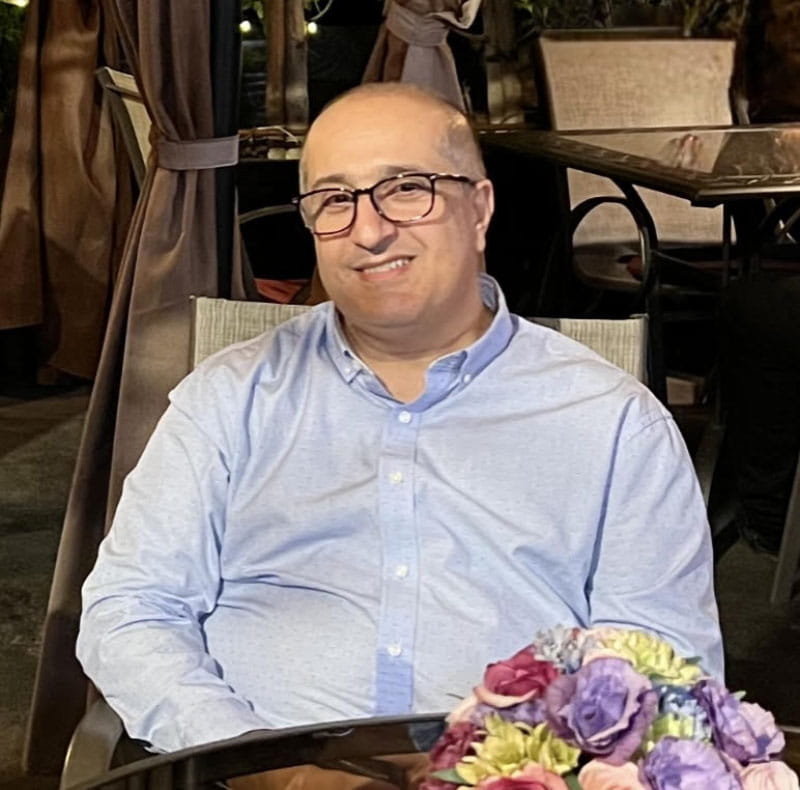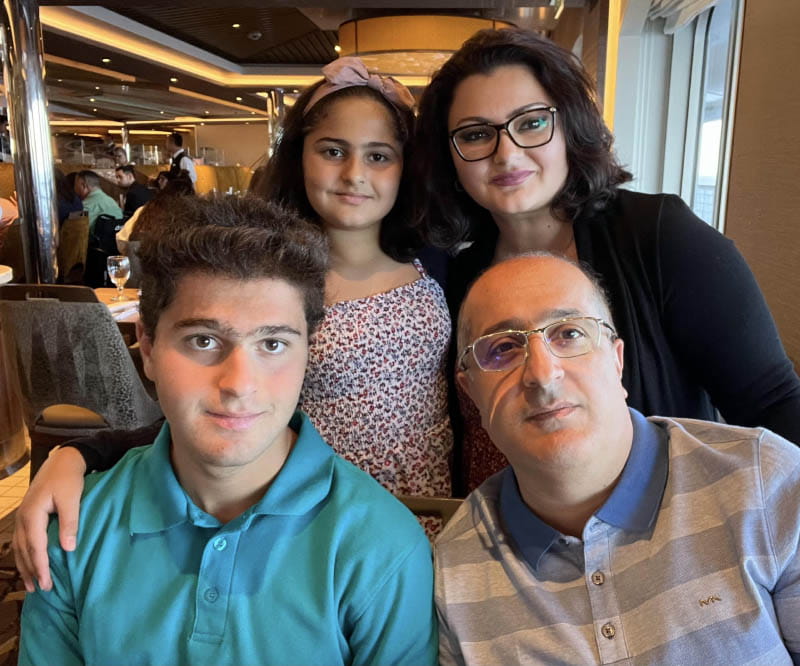After his father collapsed in a park, Los Angeles teen helps secure more AEDs in public places
By Katherine Shaver, American Heart Association News

Michael Isayan had just retrieved an errant soccer ball when he spotted his father, Edvard Isayan, lying on the ground in the middle of the soccer field.
Only a minute or so earlier, Edvard had scored a goal during the Saturday morning pickup game at a Los Angeles park. After that kick, he bent over as if trying to catch his breath. Michael, 14 at the time, asked his dad if he was OK; he insisted he was, and the game continued.
Now, other adults from the soccer game and passersby were huddled around Edvard, who wasn't moving.
He also wasn't breathing.
The chain of survival played out perfectly: Someone called 911, someone ran to fetch lifeguards from the nearby pool, and a man in the group started chest compressions. Michael didn't have any first aid or CPR training, but he remembered hearing something about tilting an unresponsive person's head back to open the airway. It felt worth a try.
As the man doing chest compressions grew fatigued and a second man took over, Michael began breathing air into his father as best he could.
I have to help, he thought.
Two lifeguards arrived with an automated external defibrillator, or AED, a portable device that issues electric shocks to the heart to restore a normal rhythm. The lifeguards shocked Edvard and forced air into his lungs via a hand pump (a bag valve mask device) until paramedics arrived. His heart still didn't have a sustainable rhythm.
When the paramedics took over the rescue effort, Michael called his mother, Liana Amelova, who was at home with his then-8-year-old sister, Elizabeth.
Not wanting to frighten her, the teenager said, "Mom, Dad fell, and the paramedics are here."
Hearing shouting in the background, Liana asked Michael to hand the phone to a paramedic.
The paramedic told her Edvard had suffered sudden cardiac arrest, an often fatal event when the heart stops beating.
"We're doing everything we can," the paramedic told her, "but he's not coming back."
Seven years earlier, Edvard had undergone a quadruple bypass and a valve replacement. Doctors had assured him and his family that his heart problems were solved; his new valve would last a good 30 years. Now, paramedics were relying on the AED to restore the power in his heart.
It did. Then they loaded him into the ambulance. A police officer who had responded to the 911 call drove Michael as they followed the ambulance to the hospital. Meanwhile, Liana headed there. As she drove, she alternated calls between reassuring her son, giving the paramedics a list of Edvard's medications, and trying to reach his cardiologist and primary care doctor.
Michael and Liana were talking when he said, "Something's happening. They've turned the sirens on, and now we're driving ahead of the ambulance to clear the way."
Edvard's heart had stopped again, and he arrived at the emergency room without a heartbeat. When Liana arrived, she found Michael in a small room with a social worker trying to calm him down while doctors and nurses worked on her husband in the ER.
An intensive care unit nurse later told Liana the ER team had been on the verge of giving up trying to revive Edvard, thinking too much time had passed since he'd lost consciousness. They made one last attempt, the nurse reported, because they knew his son was just outside the room. It worked.
In hopes of preventing brain damage and to promote healing from the trauma, doctors lowered Edvard's body temperature, a procedure called therapeutic hypothermia. This put him into a coma, breathing via a ventilator.
But soon, his organs, particularly his kidneys, began to shut down.
Doctors told Liana her husband's chances of surviving after losing a heartbeat for so long were "very low." If he did survive, a neurologist told her, he likely would have significant brain damage from having gone so long without oxygen. Then, while in the coma, he had a stroke.
A week after his heart had stopped, Edvard's eyes fluttered open. Doctors had warned Liana that he might not recognize her, remember his own name, or be able to speak. After a bit, he focused his eyes on his wife and whispered her name.
Over the following weeks, Edvard relearned the basics – how to walk, talk and hold a spoon.
"It was a true miracle that he survived and came back," Liana said.
Doctors told Liana the mouth-to-mouth breathing Michael had done at the park had given his father's brain a chance. And if not for the nearby pool having an AED, they said, Edvard probably would have died.

About six months after his father collapsed, Michael participated in a summer program in Los Angeles city councilmember Paul Krekorian's office. By then, Michael had learned that the AED had helped save his father's life, and he'd thought about advocating to get more devices in parks and other public places. He mentioned this to some of Krekorian's staffers, and Krekorian became interested in pursuing it.
"I happened to talk to the right people who directed me to someone who could take action," Michael said.
In early 2024, the City of Los Angeles Department of Recreation and Parks reported that AEDs at its facilities were used an average three times every year. While city pools were required to have AEDs, there were 56 parks and recreation facilities that didn't have one.
This spring, Michael testified before the Los Angeles City Council that buying additional AEDs for all facilities would be a "simple but common-sense, lifesaving change." A motion from Krekorian asked for $350,000 to pay for the 56 AEDs.
The council voted to send the proposal to its budget and finance committee. Krekorian then called Michael to the dais.
"I am so grateful to Michael … who saw this as his opportunity to make a difference for other families," Krekorian told the chamber.
When the funding stalled at the budget committee, Krekorian proposed to use his own district funds to buy the additional AEDs in parks and recreation facilities citywide. The city council approved his proposal Nov. 5.

As for Edvard, doctors aren't sure why his heart stopped.
While in the hospital, Edvard received an implantable cardioverter defibrillator. The battery-powered device tracks the heart rate and delivers an electric shock if it detects an abnormal rhythm.
Edvard can no longer work due to lasting cognitive limitations, such as problems with his short-term memory, dizziness and other mental and physical effects.
Michael, now 17 and a high school senior, plans to continue advocating, both at the state and federal levels, for more AEDs in public places. He recently wrote an opinion piece published in Governing magazine, calling on state and local leaders to invest in them.
Michael and his family remain grateful for everyone involved in Edvard's survival.
Asked about his son's AED advocacy, Edvard's voice choked with emotion. He's humbled, he said, by Michael's strength and determination to use the frightening personal experience to help others and save lives.
"I'm proud," Edvard said. "One word: proud."

Stories From the Heart chronicles the inspiring journeys of heart disease and stroke survivors, caregivers and advocates.





